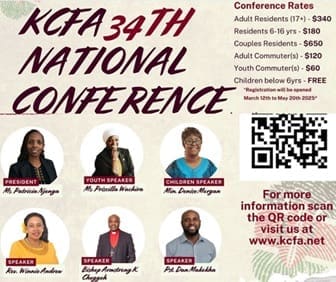
Is Cord Losing Its Grip In The Coast Region? Last week, some unexpected incidents took place in the Coast region as Cord leaders, led by Raila Odinga, visited to launch their Okoa Kenya referendum initiative. Unlike their previous successful visits to Mombasa and Taita Taveta to launch the referendum, the team faced hostile receptions in Kilifi, Kwale and Tana River. In the latter case, the Okoa Kenya registration booklets were burnt. In Kilifi, the leaders were booed and heckled, while in Kwale county, a supposedly deranged middle-aged man confronted Raila and Governor Salim Mvurya and whipped them in public with a walking stick.
It is now becoming clearer that after more than a decade of unfettered massive support for ODM in this region, the party is now facing serious challenges from some leaders and local communities who are dissatisfied with the party’s way of doing things in the Coast region. The incidents of violence also stand against Cord as the most vibrant party in this region. Reflecting on these violent incidents meted out on the Cord leadership, Naomi Cidi, who contested the Kilifi county senatorial seat in last year’s general elections, said: “ODM is finished.” According to Cidi, the ODM wave in the Coast region “will never be there again, unless we agree on a coalition formula to accommodate each other.”
Mustafa Idd, the ODM Member of Parliament for Kilifi South, says the future of Coast politics will depend on the unity of all coastal leaders. “Every region at the moment speaks in one voice on issues agreed by everybody. We’re 38 elected leaders in a party (ODM) in which we have no voice in national politics whereas others with only 14 elected leaders have more voice than us in the majority. We can’t accept that.”
Mustafa suggests that even though people love Raila, it is time the Coast region had a leader so “we can come together to accommodate other leaders as a coalition.”
Since the Orange Movement translated itself into the ODM political party following the popular victory in the constitutional referendum of 2005 and altered its support for the 2010 constitutional referendum, virtually all voters in this region have been ODM converts in the belief the party would address the much-touted historical injustices associated with the Coast region. The matter of devolution, in particular, which the ODM has strongly supported, has inspired strong support from this region. In the absence of a strong political party or leader to articulate coastal grievances, the ODM has come in to fill this gap that had been missing since the dissolution of the Coast-based, pro-majimbo Kadu party in 1964.
To prove ODM’s perennial popularity in this region, the last three multiparty elections of 2002, 2007 and 2013 handily won the ODM, with rival parties getting paltry votes. This is what can be referred to the ODM wave in the Coast because it has had a domino effect across the region.
In the 2013 elections, for example, more than 90 per cent of the elective seats at both county and national levels in this region were to ODM party. Of the six governors in this region, only Timamy Issa Abdalla of Lamu was elected on the United Democratic Front Party, the five others – Amason Jeffa Kingi (Kilifi), Mvurya Salim Mgalla (Kwale), Hassan Ali Joho (Mombasa), John M Mruttu (Taita Taveta), and Tuneya Hussein Dado (Tana River) are ODM/Cord governors. The six county assemblies are also ODM party-dominated, unquestionably enjoying the ‘tyranny of numbers,’ just as the Jubilee alliance does in the National Assembly. Mombasa and Kilifi counties lead the pack. In both counties, the ODM county representatives account for more than 90 per cent of the assembly representatives.
Why Cord is popular in the Coast region
As stated above, the primary definitional reason the ODM has had strong political grip in the Coast region is because of stated support for the marginalised communities of this region. In words, if not indeed, the ODM party manifesto and its rhetoric have fascinated the impoverished coastal communities. Whereas the successive governments of Jomo Kenyatta, Daniel Arap Moi and Mwaki Kibaki remained mum over Coastal issues, the advent of ODM rejuvenated the aspirations of the people, who perceived these governments as collaborators in the scheme to perpetuate the historical injustices to benefit themselves and their cronies.
What has gone wrong with the ODM?
The 2007 and the 2013 elections have been eye-openers and a wake-up call for coastal communities and their leaders regarding their blind support for the ODM as many have come to view the party as unfulfilling to their aspirations and concerns.
There have been many undoings on the ODM party’s national leadership in regard to the Coast region. To begin with, the ODM leadership has taken the popularity of the party in the Coast region for granted. Consider this: In the 2007 elections as in last year’s elections, ODM had by far the most votes from the Coast. Yet, in the grand coalition government when Raila became prime minister, coastal communities, literally were sidelined in the PNU/ODM 50/50 power-sharing arrangement. Not a single native person from this region was nominated by the ODM to Parliament. Not a single native coastal was considered by ODM for ministerial, ambassadorial or any other senior positions in the public service. In short, in the years Raila was Prime Minister, he forgot the contributions of the native coastal communities votes that helped propel him to the prime ministership and the attendant positions in the grand coalition government.
Gideon Mung’aro, the discredited Cord minority whip in the National Assembly, suggests that 23 of the 26 workers in Raila’s office when he was Prime Minister came from Raila’s region. Mung’aro says in the 2013 elections, the Coast clinched many positions in Parliament but: “We did not get a big share like other regions.” He told an anti-referendum rally in Kwale county.
The other undoing by the ODM leadership is the issue of land. ODM’s James Orengo, a vocal supporter of Raila, led the Ministry of Lands that condoned the continued land-grabbing in places such as Lamu county. Also, in the five years Orengo was Lands Minister, no known title deeds were publically issued to the landless people in this region to prove ODM’s willingness to address the land issue. To its credit, what ODM has failed to do over the years is now being done by the Jubilee government, even though the communities here never voted for it. As Msambweni MP Khatib Mwashetani told a political rally in Kwale county, Raila did not consider Coast people during his tenure as Prime Minister although they overwhelmingly voted for him. “They should not accuse Jubilee of tribalism because we have been given ambassador positions and chair of several institutions and we did not vote for the Jubilee government,” Mwashetani said.
The ODM national leadership is also being blamed here for its selective party nominations. Although ODM is the party of choice in this region, nominations for party leadership and elective positions been perceived as not free, unfair and lacking transparency. In the 2013 general elections, for example, Raila publicly declared his support for the few select aspirants known to him, ignoring those he did not know, even though they were equally ODM party loyalists.
The Mijikenda community made up of the Giryama, Chonyi, Duruma, Digo, Jibana, Rabai, Kambe, Kkaauma and the Ribe, have been the biggest losers in this scheme of things. This may also explain why the majority of the ODM rebels here belong to the Mijikenda communities in Kilifi, Kwale, and to a lesser extent, Mombasa counties. These communities have also accused the ODM leadership of favouring the Mombasa county, ostensibly for financial reasons. It has been alleged, rightly so, that most of the ODM campaign funds in the Coast region are sourced from wealthy business individuals and politicians from Mombasa county. It is also an open secret that some ODM leaders in Kwale and Kilifi counties owe their allegiance to the financial support from the pro-ODM Mombasa county tycoons. Nevertheless, the contributions of the impoverished Mijikenda communities in terms of vote power cannot be underestimated. The Mijikenda community is by far the most populous in the Coast region and Raila’s poll victories have come primarily from the Mijikenda group. Yet, it is the Mijikenda that have been the underdogs in the ODM’s game of rules.
As Cidi observes: “People are asking, should we wait until Raila becomes President before we get what we want done? People in the region are tired of Raila for what he has not done for them.”
Okoa Kenya referendum
The Okoa Kenya referendum is a catalyst to the Coast region’s political game changes. The communities here fully support both the Okoa Kenya and the governors-led Pesa Mashinani referendum initiatives, but they look at the ODM and Cord leaders with a suspicious eye. They are convinced that once these leaders assume political power, they will abandon them as they have done before.
Hence last week’s sporadic non-lethal violence and hostilities in Tana River, Kilifi and Kwale counties are indications that in some parts of this region it will not again be business as usual, at least in as far as ODM policies are concerned. Kilifi Governor Amason Kingi tried to assuage the situation by imploring local leaders and the people to shun violence, arguing that the referendum should not be viewed as a Cord or Jubilee affair. According to the governor: “It is for all of us and therefore nobody should sponsor violence.” Unfortunately, other leaders see it the other way. Mustafa, for example, posits: “This is not the right time for a referendum. It is time for delivering services.”







